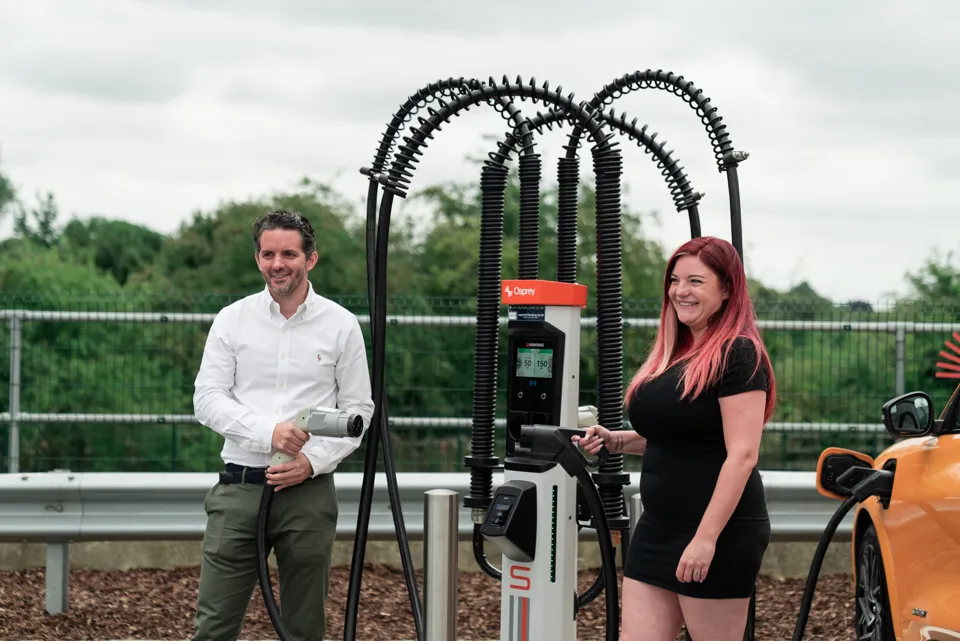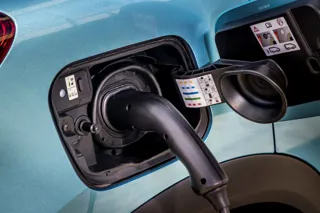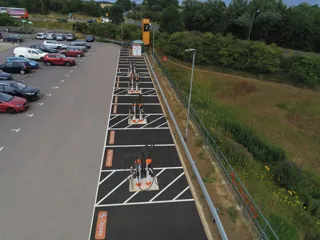As the public charging network grows apace, one organisation is keeping tabs on the quality, safety and accessibility of the charge points being installed.
ChargeSafe was established by Kate Tyrrell and James Coyle to highlight charge points that were situated in isolated or dimly lit areas, where lone drivers may feel unsafe to stop.
In a short space of time, the company has expanded its remit to provide an in-depth 63-point audit, which includes assessing the size of the parking bay, whether there are height or other access restrictions, turning circles and if it’s possible to reverse park into the bay.
Tyrrell said: “The aim of ChargeSafe is to support the public charging networks to identify areas for improvement with greater accuracy, championing what’s being done well and, ultimately, leading to a more inclusive charging experience for the UK.”
The business plans to inspect every charge point in the UK, initially, and then carry out annual follow-up visits.
OPERATORS CAN SUBSCRIBE
A team of inspectors carries out the audits, with each charge point given a score from one to five.
This information will be available publicly, while operators can subscribe to the service to receive in-depth reports about their own network.
The first to sign up is Osprey Charging, which has more than 300 public rapid charge points but is planning 1,500 within the next four years.
Ian Johnston, CEO of Osprey Charging, said: “The hyper competitiveness between ourselves and the other leading networks is what drives us. Ultimately, what I want to know is what can I do to make you turn right into my site, instead of turning left into a competitor site.”
Osprey’s new installation at Paisley Pear, an eight-charger, high power pub-based hub near Silverstone, was the first of Osprey’s new accessibly designed hubs to be inspected by ChargeSafe.
It scored a pre-launch rating of 4.46/5, including the highest accessibility score seen so far by ChargeSafe on the UK network.
This new hub marks a step-change in Osprey’s hub roll-out to more accessible designs, with 2021-launched hubs at Banbury Cross, Wolverhampton and Croydon, scoring 4.26, 3.96 and 3.80 respectively.
Johnston continued: “Ultimately, we are only as good as our worst site. If someone gets their new EV and their first experience is on our worst site, that's their view of the network. So, the pressure is on us. We have to make sure that our worst-rated site is an excellent one.”
STATE OF NATION REPORT
To mark its one-year anniversary, in November, ChargeSafe will publish its first state of nation report, based on the audits it has completed so far.
The initial focus will be on the country’s 3,000 rapid chargers; it will then begin to work through the entire network.
Tyrrell said: “We've not even scratched the surface, yet. We've done about 500 Inspections to date and there's more than 3,000 rapid charge points on UK roads today.
“AC chargers are not a priority right now because we are thinking about the purpose of the charger and focusing on the ones where you're going to stay with your vehicle, or you're not going that far away from it.”
In the longer term, ChargeSafe aims to provide its data to existing charge point mapping services, such as Google and Zap-Map, to make it easier for drivers to find suitable points.
The Government plans to spend £1.6 billion to build a network of 300,000 electric vehicle (EV) chargers by 2030.
It represents an increase of around 10 times the current number of publicly available chargers.
In announcing its much anticipated Electric Vehicle Infrastructure Strategy, in March, the Department for Transport said charging an EV will become easier and cheaper than refuelling a petrol or diesel car.
Ministers recognise that the current pace of roll-out is “too slow” and that the public charging network “lets people down” in terms of reliability and transparency of pricing.
The announcement coincided with the introduction of new legal requirements for charge point operators, mandating that they provide real-time data about charge points and accept contactless payment.
> Interested in comparing electric vehicle data? Check out our EV tool.
> Interested in ensuring the efficient use of EVs. Check out our dedicated editorial sections: Insight & policy | EV news | Charging & infrastructure | Costs & incentives | Benefit-in-kind | EV case studies | EV road tests























Login to comment
Comments
No comments have been made yet.